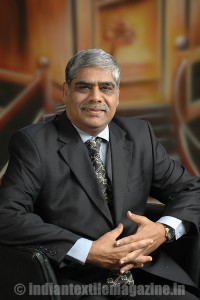The GST Council, at its 16th meeting held on June 11, announced 18 per cent as the GST rate for man-made fibres, filaments and yarn. It also decided not to allow refund of accumulation of input tax credit at fabric stage that attracts only five per cent GST rate. It did not included the job work on garment and made-ups related activities under the list of five per cent rate of service tax.

In a press release, Mr. M. Senthilkumar, Chairman, Southern India Mills’ Association (SIMA), has stated that there will be a huge accumulation of excess credit with 18 per cent GST rate on yarn and only five per cent GST rate and non-refund of accumulated input tax credit at fabric stage. This would significantly increase the fabric cost and seriously affect the independent spinning and weaving units, including powerloom sector.
He is of the view that an independent weaving unit having around 50 looms and producing 100 per cent viscose fabric would incur an additional cost of over Rs. 2 lakhs per annum with 18 per cent GST rate on yarn when compared to a composite unit. Even with 12 per cent GST rate on yarns, the additional cost would be Rs. 1.3 lakhs per loom per year, thus creating an unhealthy competition between the composite and independent weaving units.
According to him, the Government could have classified the entire textile value chain under the five per cent GST rate to avoid such problems or refund the accumulated input tax credit at every stage so that the cost is not increased and a level playing field is created to ensure proper compliance.
The SIMA chief has further stated that the differential rates and non-refund of accumulated input tax credit would not only affect the industry but also lead to wrong declaration and corruption. Therefore, he has appealed to the Government to discourage any loophole for wrong declaration and corruption and pleaded for the refund of accumulated input tax credit at fabric stage to protect the interests of the powerloom sector and also meet the clothing needs of the poor masses with a reasonable tax burden.
He has further appealed to the GST Council to include garments, made-ups and other sewn textile products job work under the five per cent GST rate for service tax as these segments create 100 to 150 jobs per crore of investment and thus large-scale employment for rural masses, especially women, folks is created.